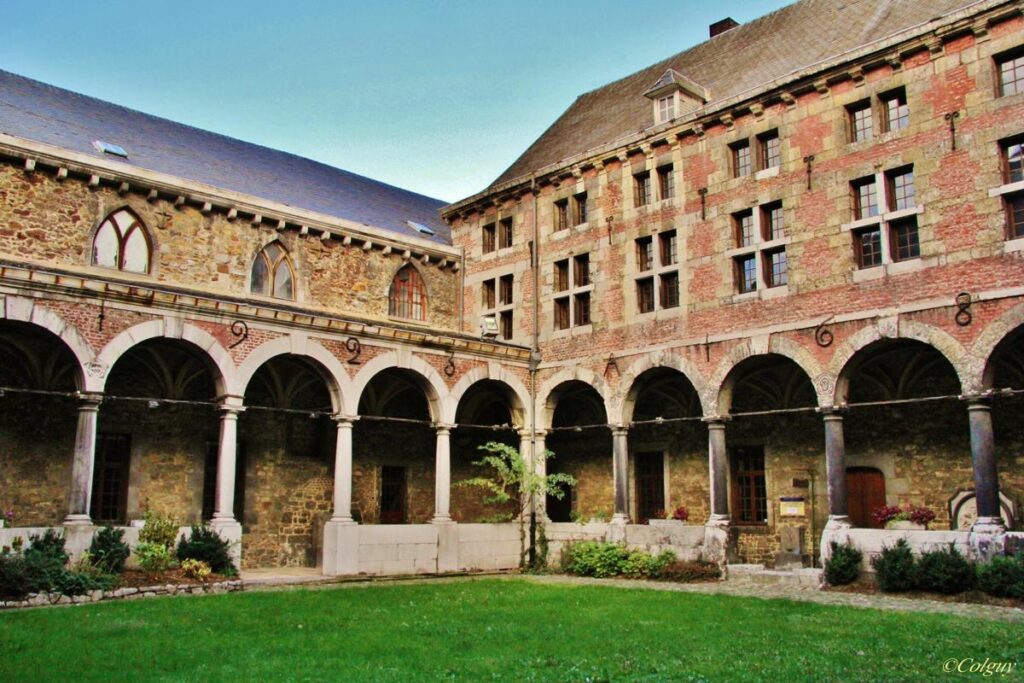In this modern world, if you’re looking for a cultural place to travel? A place with medieval wonders than Huy has numerous things for you. On the bank of river Meuse lies this charming little town which is not lacking in tourist temptations. In the Early Modern Age, if you were a visitor to Huy, you would be pointed to the city’s four wonders, “Les Quatre Merveilles”. It offers at first glance, over the river and the King Baudouin bridge, its Collegiate Church and Fort. The City with panoramic views and ultimate adventures.
Looking for things to do in Huy? You can explore what’s popular with our top picks, Ready?
The Notre-Dame and Saint-Domitien collegiate church is an incredible church in the heart of Huy. It is a Mosan Gothic church. Built between 1311 and 1536, is the fifth church on this spot since the fourth century. It contains one of the four historic wonders of Huy, the rose window, Li Rondia it measures nine metres in diameter and is the largest Gothic rose window in the country. This beautiful well-preserved church is proudly adding treasures in the rich heritage of Belgium. It shows the culture and heritage of its richest form. It would be a great loss not to visit this incredible Gothic Church.
Crowning the cliffs on the right bank of the Meuse is Huy’s citadel. A remarkable castle with a spectacular viewing point of the city. Built between 1818 and 1823 on the site of the former castle, now which has been fortified for more than 1,200 years. This citadel has some interesting history behind it. It was first built by local royalty in the middle ages and later on, it became modified by the Dutch due to its tactical value. It was even used by the Germans during WWII when it became a detention camp. Today, it is visited mainly for its Museum of the Resistance and Concentration Camps. The museum is about the lives of the prisoners and the past life of the city. The best part is the top of the citadel. It has some amazing vista’s and you can spend hours on the grassy roof. The site can be reached via a footpath zigzagging up from the riverside beyond the church.
Musée Communal de Huy is a very interesting museum that deserves to be better known. The museum is housed in a former Franciscan convent that was established in the 13th century and rebuilt in the Mosan Renaissance style in the 17th century. The municipal museum covers all of prehistory Hutois activities to today. The museum deals with topics like the Huy’s prosperous Medieval period, fine and decorative arts from the region, archaeological finds going back to the Merovingian era, viticulture and local crafts. Allow at least 2 hours to have time to visit the ten rooms without hurry. The major highlight of the museum is Paintings by two local 19th-century artists, Émile Delpérée and Isidore Lecrenier. Highly recommended.
The Grand place is one of the four wonders of Huy. It has some big monuments and a lot of history.
It concentrates many cafes, brasseries and restaurants which, when spring comes, set up their terraces to the delight of passers-by. The significant spot here is the square illuminated with a famous 18C fountain, “li Abyssinia”, topped by bronze figures from 1406 and 1597. It stands in front of the elegant Town Hall. Listed as exceptional Walloon heritage, this fountain was erected in 1406. The fountain is encircled by blue limestone tanks from which rises an elegant ironwork canopy. A must visit the place.
If you wish to explore the entire City then this route will allow you to discover it by bike or on foot, the Condroz region and the exceptional heritage of Huy. RAVeL greenway is more than 1,350 kilometres of light greenways along disused railway lines and canal towpaths. Riding through Hamois you can view Château Pickeim and Château de Buress from the path, and north of Havelange, the fields are grazed by ultra-muscular Belgian Blue cattle.
The trail is challenging since there are many summits and valleys in the region.
Belgium’s real flavour is in its wine of Huy. Winemaking on these precipitous slopes goes back to the start of the 9th century. The south-facing left bank of the Meuse has just the right conditions for growing white wine grapes like Chardonnay, Pinot-Gris, Riesling and Sylvaner. Here are a few places to sit down and relax with the perfect drink.
Le Bolus: This regional bar is a pleasant and convivial address to have a drink after a busy day.
Pinot Gris: In the 19th century this was Belgium’s wine capital. This is the origin of Clos Bois Marie, now it is producing almost 2,000 bottles of white and sparkling wine each year.
Contre Vent & Marées: This exotically-decorated bar serving exotic cocktails allows you to get away from it all. The hut is a very friendly place for you to sit and raise a toast.

